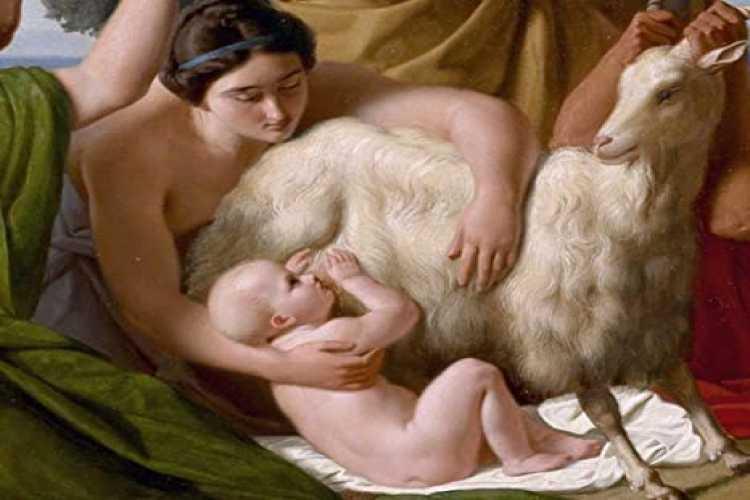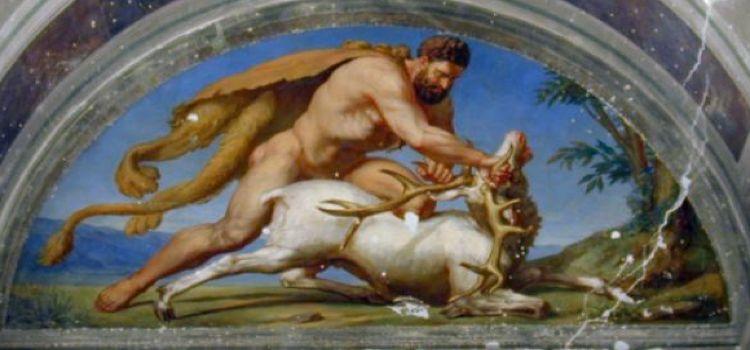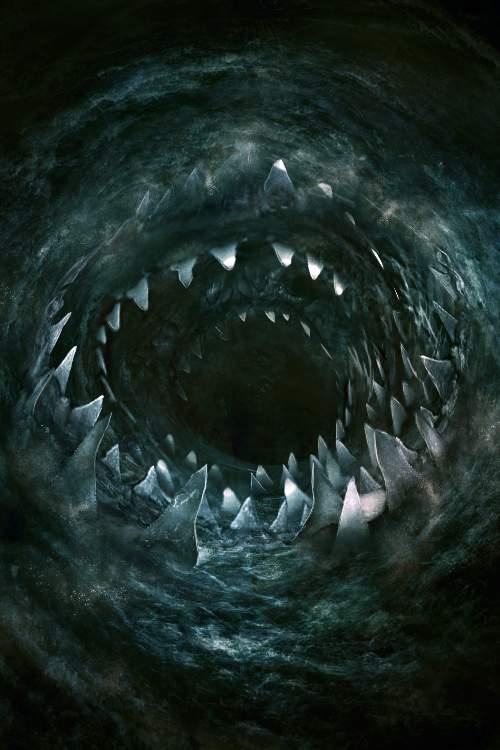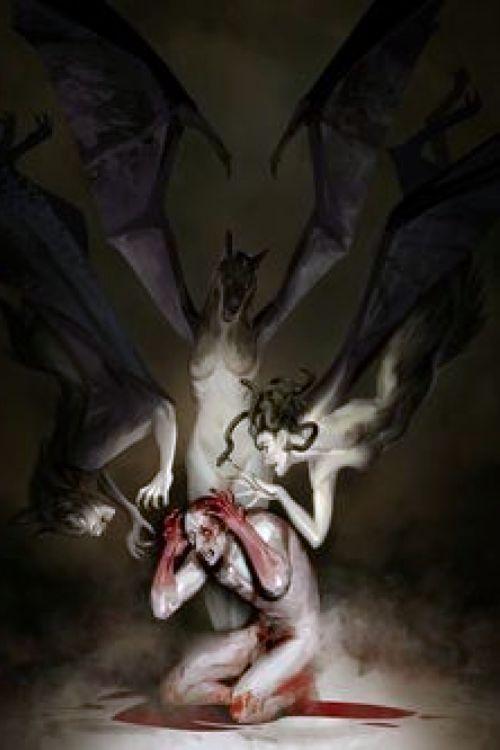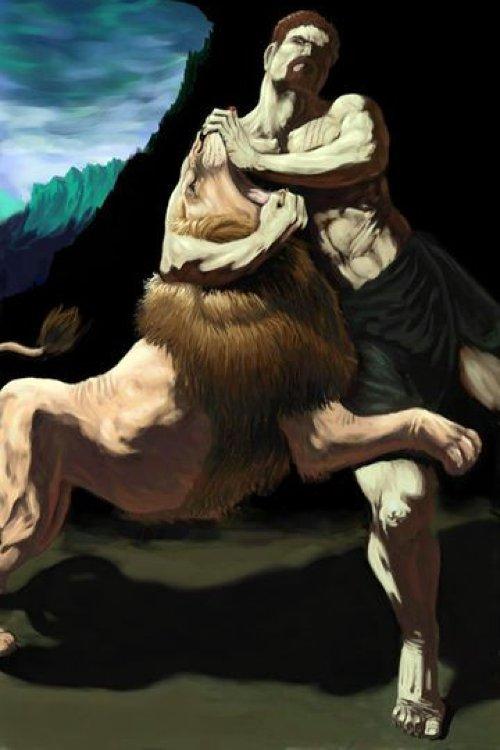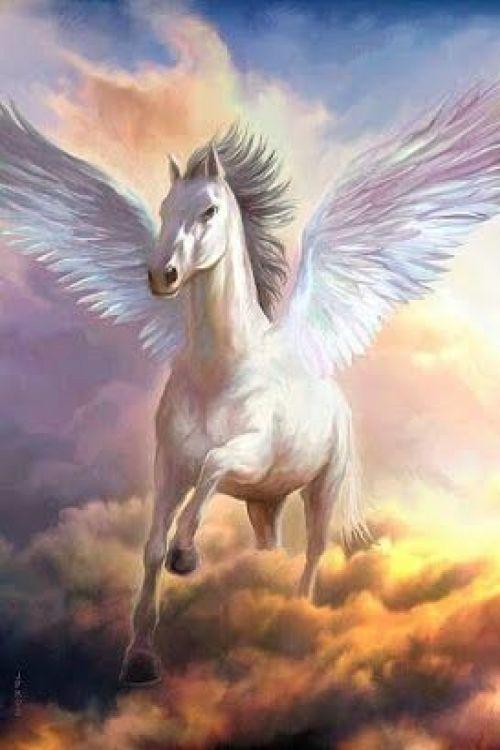70 Fantastic creatures from mythology
by Mythologis EncyclopediaWhy does mythology abound in fantastic creatures?
In the realm of mythology, fantastic creatures have been the subject of belief for centuries, but their existence has never been proven, and we only come across them in the works that have come down to us. The main reason why creatures abound in Greek mythology is to test the bravery of our ancient heroes in their epics.
In Ulysses' Odyssey, for example, he encounters cyclops and mermaids, passes through the Straits of Mesin and confronts Charybdis and Scylla, while Hercules battles the Hydra of Lerna, the Nemean lion, the hind of Cerynia, Theseus the Minotaur and Perseus riding Pegasus, eliminating the Gorgon and other monsters.
Sometimes creatures have their own story and illustrate traits of popular wisdom, where Arachne becomes a spider because of Athena's pride, while Python represents a chaotic element of the world and Lycaon the bestiality of man in the guise of a wolf.
the Caucasian Eagle - Zeus' winged dog
The Caucasian eagle, known as Zeus' winged dog, is a huge bird of prey that Zeus sent every day to eat Prometheus' liver while he was chained to the mountain.
A cruel punishment from Zeus that Prometheus had to endure, just because he had given fire to mankind. As Prometheus was a demigod, he was immortal and his liver grew back at night.
The Caucasian eagle, son of Typhon and Echidna, was finally killed by Hercules, who thus delivered Prometheus from his torment.
Amalthée - Zeus' nursemaid
It's a myth associated with Zeus's childhood, and it's not clear whether Amalthea was a goat or the Nymph to whom Rhea had entrusted the newborn baby.
Playing with the goat, Zeus broke its horn, and to make amends, he transformed it into a magic horn, which would offer its owner anything he wished: the "Horn of Plenty" had just been born!
Diomede's horses
According to certain traditions, Diomedes' horses were the children of Ares and Cyrene, and fed on human flesh.
The king of Thrace, Diomedes, used to feed them the flesh of his guests.
Camped the nymph of the underworld
Child of Tartarus and Gaia, the underworld nymph Campé was responsible for keeping the Hecatonchires and Cyclopes locked in the depths of Tartarus.
A female dragon and snake, she was killed by Zeus when he freed the Cyclops and Hecatonchires.
Dercéto goddess of the lakes
Derceto was a great Phoenician goddess from northern Syria, with the body of a fish and the face of a woman, who lived in a lake near Ascalon, an ancient city north of the Gaza Strip in Israel. Greek kings, respectful of Syrian sanctuaries and cults, perpetuated the tradition inaugurated by Alexander the Great and added local divinities to their panoply of gods.
Hippalectryon
The hippalectryon is a fantastic hybrid creature from ancient Greece. Its front part was a horse and its rear part a rooster, complete with wings, tail and legs. It wears yellow or russet plumage and has no myths or legends attached to it; only ceramic representations tell us of its existence.
The Cerynian hind - The sacred animal of Artemis
Mainly associated with the 12 labors of Hercules, she is also the protégé of the goddess Artemis, who considers her sacred.
According to ancient authors, there were 5 in all, 4 of which were captured by Artemis for her chariot and the last, even more agile than the others, escaped the goddess who granted her protection. They were marvelously beautiful, with bronze hooves and golden horns.
What are centaurs?
In Greek mythology, the centaur is a man-horse creature that lived on Mount Pelion in Thessaly, born from the mating of Centauros, a demigod (son of Ixion and Nephele) with a mare.
Their ancestry sometimes differed according to ancient texts and authors, but they were generally depicted with the powerful body of a horse, and the torso and head of a man. They were, by nature, violent and sexually attracted to women, and wine turned their heads.
Other centaurs were wiser, like Chiron, a demigod, immortal and possessor of wisdom and knowledge. Pholos was a philosopher centaur and friend of Hercules.
The best-known centaurs
Chiron: son of Cronus and the Oceanid Philyra, he was known for his wisdom and knowledge, serving as tutor to many Greek heroes including Hercules, Achilles, Jason and Asclepius.
Crotos: son of Pan and Euphémé, inventor of the bow and arrow, he was reputed to be an excellent hunter and a devoted admirer of the Muses and their arts.
Eurytion: son of Ixion and Nephele, his misconduct at the wedding of Pirithoos, king of the Lapithes, triggered war against the centaurs: drunk, he tried to rape the bride.
Homados is a centaur who personifies the tumult of battle and the clash of weapons, and is also the spirit of the disorderly multitude. As punishment for raping Alcyone, he was killed by Hercules.
Hyléos and Rhoécos, both sons of Ixion and Nephele, were killed by Artemis when they tried to abuse the virgin huntress Atalanta.
Pholos: son of Silenus and a hamadryad, is a calm centaur and friend of Hercules.
Nessos: son of Ixion and Nephele, he was killed by Hercules. He is a wild-tempered centaur who tried to kidnap Heracles' wife Dejanira when they wanted to cross the River Evénéos.
Thérée was killed along with other centaurs by Hercules during his hunt for the Erymanthe boar.
The Chimera
Daughter of Typhon and Echidna, the chimera is a fantastically evil creature from Greek mythology.
The mystical animal was characterized by a hybrid body, half lion with wings and half goat, decorated with a serpent's tail.
As this was not enough to make the monster horrifying, it also spat fire from its nostrils.
In ancient times, the Chimera symbolized the volcanic nature of the soil in the Lycia region of Asia Minor in Turkey.
Today, Mount Chimera, now Yanartaş (Flaming Rock), is a site overlooking the Temple of Hephaestus, with 2 dozen chimneys spewing methane gas that catches fire.
Cerberus - Hades' faithful dog
Cerberus was the son of Echidna and Typhon, a three-headed, polycephalic dog who guards the entrance to the underworld.
Chained to the entrance to the underworld, he prevented the dead from escaping Hades' lair and the living from recovering loved ones.
Not only did he terrorize the living, the dead themselves had to appease him with a cake of honey placed in their tomb along with Charon's obolus.
Eurystheus, King of Argolida, gave Hercules the final task of capturing Cerberus alive and bringing him to him.
Hercules finally meets Hades and asks permission to bring Cerberus to the surface, to which Hades agrees if Hercules can subdue the unarmed beast.
Empousa: In Greek mythology, this is a creature, a female demon who takes on the appearance of a woman to seduce her prey before devouring them. Daughters of Hecate, the goddess of magic, Empouses (plural) feed on the flesh and blood of their victims, and their hair bursts into flames, including the lamia and the mormolyce.
Echidna: The mother of many monsters sired by Typhon, she is half woman and half serpent. Her head, torso and arms are those of a beautiful woman, while the rest of her body is a huge, hideous snake, covered in scales of changing colors.
Seahorse: In Greek mythology, the seahorse is a fantastic creature with the head, neck and front legs of a horse. The rear part is often that of a sea serpent. They are usually the mounts of ancient marine deities and pull, for example, the chariot of the god Poseidon.
Ladon: This monster of the Greek imagination is a reptile, son of Echidna and Typhon or Phorcys and Ceto, depending on the version consulted. He is said to have 100 heads, each of which speaks a different language.
Crommyon's goose: Daughter of Typhon and Echidna, she is the mother of the Calydon boar. Wild and ferocious, she is described as a man-killer and terrorizes the inhabitants of Crommyon in the Corinth region, having been struck down by Theseus during his crossing of the Saronic Gulf.
Machlyès (the): A tribe whose women were considered hermaphrodites, due to the ritual battles they organized with sticks and stones, against the women of other tribes.
Lamia (the): These are supernatural female creatures of evil deeds from Greek mythology, who transform into monstrous creatures under varying circumstances, attacking young men in particular, but also taking sexual advantage of them. As soon as young men kiss them or their identity is discovered, they immediately revert to their serpent form to kill and devour those around them.
Orthos: Orthos is the son of Typhon and Echidna, the two-headed dog of the 3-headed giant Geryon, who was killed by Hercules when he had to retrieve the beef herd for his 10th job. He is said to be the father of the Sphinx, the Nemean lion and Crommyon's goat.
The birds of Lake Stymphale: Carnivorous birds, trained by Ares to feed on human flesh, infested the forests of Arcadia. Killing all the birds was part of Hercules' 6th task, which he accomplished with patience and determination until he drowned them all in Lake Stymphale.
Charybdis and Scylla - The guardians of the Strait of Messina
Charybde
Daughter of Poseidon and Gaia, Charybdis lived on a rock in the Strait of Messina, between Italy and Sicily. She had a voracious appetite and was accustomed to stealing animals to devour them. She owes her metamorphosis into an abyss to one of her evil deeds towards Zeus' flock. Since then, she has become the terror of sailors, swallowing immense quantities of water 3 times a day, along with fish, ships and their crews, and rejecting anything inedible.
Scylla
An inseparable companion of Charybdis, she is said by Homer to be the daughter of Phorcys and Crataïs. A great beauty, she lived among the Nereids. The god Glaucos, terribly in love with her, asked the magician Circe to compose a love potion for her. But Circe was secretly in love with the god, so she composed an elixir and poured it into the spring where the nymph was bathing, transforming her into the horrible 6-headed monster that now terrorizes sailors in the Strait of Messina.
Ouranian Cyclops - Blacksmiths - Builders - Shepherds
Legends about Cyclops vary from author to author, and are even contradictory. On the whole, they are giant monsters with only one round eye in the middle of their foreheads, a fantastic creature of Greek mythology. Not to be confused with giants, they are a category in their own right, classified into different families:
- The Uranian Cyclops: children of Ouranos and Gaia, they are synonymous with strength and power, and embody the crafting of exceptional, well-worked weapons. Three of them serve the Olympian gods: Brontès (thunder), Stéropès (lightning) and Argès (lightning).
- The Cyclops blacksmiths: There are 3 of them, serving as assistants to Hephaestus: Acamas (the tireless), Pyracmon (the anvil) and Adnanos (the hammer).
- The Cyclops Builders: A group of Cyclops who live by their work, in the service of King Proetos they built the walls of the city of Tirynthe, the birthplace of Hercules. These Cyclopean walls are also found in Mycenae and many other Mycenaean cities. The sheer size and weight of the blocks of stone are so great that, even today, it's hard to believe that they were built by humans.
- The Cyclops shepherds: A late generation, far less brilliant than their predecessors, who were mainly content to raise sheep on the island of Sicily. The Cyclops, sons of Poseidon, Polyphemus and Telemos, are savage, anthropophagous giants, fearing neither gods nor men, without faith or law.
The Erinyes - Persecuting goddesses
The Erinyes or Erinnyes are persecuting infernal goddesses, also known as "the furies", daughters of Gaia and the blood of Ouranos.
Their number remains indeterminate, but 3 are regularly mentioned in writings.
Shrew: embodies hatred
Tisiphone: the embodiment of vengeance
Alecto: the embodiment of implacability.
They are not subject to Zeus, and remain in Erebus until called back to Earth.
They personify someone's curse, and are responsible for punishing crimes during their perpetrator's lifetime, not after death.
51 names of mythological giants
In Greek mythology, the giants are almost all descended from the blood of castrated Ouranos, who impregnated Gaia. Apart from the gigantomachy, they play a minor role in mythological events, and are notably encountered in the adventures of our ancient heroes and in the gigantomachy, their battle against the Olympians and their allies. They are characterized by exceptional stature and strength, but they are not alike; they can be represented with a human appearance, with a serpent's tail, with a lion's head, whatever the imagination can come up with.
- Agrios - Alcyonée - Alpos - Antée - Argos (Panoptès) - Aristée - Astréos
- Cacus - Chrysaor - Chthonios - Clytios - Céos
- Damasène - Damysos
- Égéon - Emphytos - Encelade - Éphialtès - Euboée - Euphorbe -
- Eurymédon - Eurytos
- Gration - Géryon
- Hippolytos - Hoplodamos - Hyperbios - Léon
- Mélissée - Mimas - Mimon - Molios - Mylinos
- Olympos - Orion - Orios - Otos - Ouranion
- Pallas - Pancratès - Pélorée - Phœtios - Polybotès - Porphyrion
- Rhœtos - Sycée
- Talos - Thoas - Theodamas - Théomisès -Tityos
The Gorgons - Medusa - Euryale - Stheno
The Gorgons are fantastically evil creatures, the daughters of the sea deities Phorcys and Ceto.
They are 3 sisters, 2 of whom are immortal, but have no powers of their own, Stheno being classified as powerful and Euryale as the world's greatest.
The most famous, Medusa, on the other hand, can die and be killed, but the power of her gaze to petrify anyone who crosses her path is a formidable weapon.
Nevertheless, the hero Perseus succeeded in beheading the monster and offering its head to Athena, who included it on her shield to petrify her enemies.
The Harpies - Divine vengeance
Harpies, or harpyes, are the daughters of Thaumas and the Oceanid Electra. There are 3 of them (sometimes there are more in certain traditions).
Divinities of devastation and divine vengeance, they are faster than the wind, invulnerable and cackling, devouring everything in their path, leaving only excrement.
- Aello (the gust of wind), sometimes also called Nicothoé (swift-footed)
- Ocypète (she who flies fast)
- Podarge (light-footed), also called Céléno or Celaeno (obscure)
Podarge was united with Zephir, in the form of a mare. She gave birth to 4 of the immortal horses of Greek mythology.
Achilles had 2 to pull his chariot during the Trojan War (Xanthe and Balios), while the other 2, Phlogéos and Harpagos, were those of the Dioscure Castor and Polux.
He is also credited with the birth of Arion or Areion, a fifth immortal horse, gifted with speech, but also the fastest horse in the world and fed on gold.
The Grées, Graies or Grey Sisters are the daughters of Phorcys and Ceto, elder sisters of the Gorgons, and their guardians. They are considered sea deities, personifying the foam of the sea. They are so called because in ancient Greek, "graia" means "old ladies", and as they were all born wrinkled and grey-haired, with only one tooth and one eye between them, they had to take it in turns to share it.
The Griffin or grype is a legendary creature found in many ancient cultures. It is imagined and represented with the body of an eagle (head, wings and talons) grafted onto the back of a lion (abdomen, legs and tail) and equipped with horse ears. According to ancient Greek tradition, griffins lived near the major gold deposits in northern Europe.
The Lernaean Hydra is a child of Typhon and Echidna, raised by Hera under a plane tree near the Amymone spring and the Lernaean marshes in the Argolid (approximately opposite Nafplio). In most versions, she has the body of a serpent, of inordinate size, with nine heads, eight of them mortal, the ninth immortal. The breath blown from its many mouths exhaled a dangerous poison, even while the monster slept.
The Erymanthus boar, a huge boar that terrified the inhabitants of Mount Erymanthus in Arcadia, was captured by Hercules during the fourth job he was given to do.
The Calydon boar is a fantastic creature from Greek mythology, which ravaged the region of Calydon, in Aetolia. It was sent by Artemis to punish Œnée, King of Calydon, who had forgotten to make an offering to the goddess during the Feast of the Thalysies.
The Teumesse fox is a fantastic creature linked to the Theban Cycle. Sent by the gods, it was destined never to be caught. Present to terrorize the inhabitants of Thebes. Creon, King of Thebes, asks his son Amphitryon to take care of it, who then turns to Cephalus to hunt it down with the help of Lelaps, a divine dog that never misses its target. Zeus intervenes to put an end to this interminable hunt, turning the two animals into stone and putting an end to the ordeal of the infallible dog against the elusive fox.
The Lion of Nemea
A creature of Greek mythology, he was the son of Orthos and the Chimera or Echidna.
He was a reign of terror in the Nemea region of Argolida, and killing him and bringing back his skin was part of the first of Hercules' 12 labors.
The Minotaur
The Minotaur is a monster from Greek mythology, with the body of a man and the head of a bull. Born of the love affair between Pasiphae, the wife of King Minos, and a white bull sent by Poseidon, he is locked up by Minos in the labyrinth.
Symbolically, the Minotaur is the image of man who lets himself be dominated by his impulses.
Pegasus the Winged Horse
Pegasus is one of the most famous fantasy creatures in Greek mythology. The pure-white divine winged horse can also be represented with a black coat. He was born of the blood of the Gorgon Medusa, when she was beheaded by Perseus after a union with Poseidon.
The guardian python of Delphi
Python is a dragon snake, son of Gaia the Earth, who was primarily the guardian of the Sybil, the oracle of Delphi, originally dedicated to Themis. Apollo killed him in order to place his oracle, the Pythia, there. It was also a way for him to take revenge on Python, who was constantly pursuing Leto so that she couldn't give birth to her children Artemis and Apollo.
Satyrs of ancient Greece
The satyr is a fantastic creature from Greek mythology. Together with the Maenads, they form the Dionysian procession, regularly teaming up with the god Pan, or accompanying the nymphs. An animal with the bust and head of a man and the legs and horns of a goat. Satyrs and Silenes were originally depicted as boorish, naked men who insistently display their monstrosity and the comical aspect of their sexual arousal. By analogy with the lecherous and libidinous behavior attributed to them, the term "satyr" can be used in language for a man obsessed with sex, who indulges in acts that may be reprehensible. Satyrs include :
- Silenus: Silenus was the tutor of Dionysus, and gave his name to a brotherhood of satyrs, the Silenes, the best-known of whom are Terpon, Terpès and Dolion.
- Egipan: A half-man, half-animal country deity, most often with goat feet and ears, associated with the god Pan.
- Marsyas: son of Olympos, a Phrygian satyr of the Silenus family, god of the Marsyas river, he played the aulos, a 2-body flute.
14 mermaids from Greek mythology
It's generally accepted that mermaids are the daughters of Acheroos and Melpomene or Sterope, fantastical sea creatures often pictured as half-woman, half-fish. However, many ancient Greek writings describe them as bird-women.
Their numbers, names and lineage (they could be the daughters of Calliope or Gaï, or even Phorcys with Kéto) are also unclear.
After processing the various pieces of information available on the subject, we were able to identify 14 of them, whereas the authors generally speak of only 3 to 4.
They do, however, agree that there are groups of 3, with one playing the lyre, another the flute and the third practicing her singing.
Aglaopé, with the beautiful face - Aglaophone, with the splendid voice - Aglaophème, with the brilliant reputation - Himeropa, the gentle one - Leucosie, the white creature - Ligie, with the clear and persistent voice - Molpé, the musician with the strange song - Parthénope, with the face and voice of a young girl - Pisinoé, the one who persuades - Raidné, the friend of progress - Télès, the perfect one - Thelxinoé, the enchantress who charms the mind - Thelxiope, who meditates with her words - Thelxiépie, the charmer who meditates with her epic song.
The Myrmekes are fantastic creatures from Greek mythology. As their name suggests, they are ants, but giants. They were supposed to guard an anthill under a hill where they had piled up vast quantities of gold. According to myth, these gold-digging ants are the size of dogs or foxes, digging into sandy areas and extracting the gold.
The 5 Spartans are the warriors of a fantastic people involved in the myth of Cadmos, founder of Cadme, the future Thebes. They are born from the dragon's teeth, sown by the king of Thebes, on the advice of Ares. Distraught by their numbers and size, Cadmos throws a stone at them, and believing themselves to be under attack, they fight amongst themselves, leaving only five survivors. These five: Echion, the son of a viper - Udayos, the man who rose from the ground - Chthonios, who penetrated the earth - Hyperenor, the superman - Peloros, the great monstrous, will help the king found and build his fortified city.
The Sphinx is a female hybrid monster with the body of a lion, the figure of a woman and the wings of a bird, depicted sitting on its hindquarters. Its appearance in Greece is linked above all to the cycle of the 4 epics of the legends of Thebes.
The Cretan Bull is a creature of the ancient imagination, its capture the subject of the seventh of Hercules' labors. Two myths offer clues as to its origin: the first tells of the bull offered by Poseidon to King Minos, with which his wife fell in love, giving birth to the Minotaur. The second version tells of the white bull into which Zeus transformed himself to take the beautiful Europa on his amorous adventures.
Triton is a secondary sea god of mythology, son of Poseidon and Amphitrite, the messenger of the waves who blows his conch shell to announce the arrival of the god. Triton is the father of Pallas and is sometimes cited as the father of Scylla and other newts. The upper part of his body, down to his loins, is that of a swimming man, the lower part that of a long-tailed fish, and he rides in a chariot drawn by blue horses.
Typhon - The father of mythological monsters
In mythology, Typhon is a primitive evil deity, son of Gaia the Earth and Tartarus, titan of strong winds and storms.
He appears as a monstrous, flame-breathing dragon, or as a destructive hurricane.
He is the father of many fantastic creatures in Greek mythology, all born of his union with the goddess-vipiress Echidna.
To name but a few: the underworld dog Cerberus, the Chimera, the Nemean lion, the Caucasian eagle, the Sphinx, Crommyon's goose, the 2-headed dog Orthos, the dragon Ladon, the Hydra of Lerna, all described earlier in this page.


